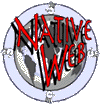
Huaorani
Fueron conocidos con el nombre despectivo de aucas
(salvaje guerrero). Su territorio tradicional se extendía desde
el río Napo al norte, hasta el río Curaray al sur. Son
aproximadamente 1300 individuos y la mayor parte vive en
comunidades como Toña Empari, Dayuno, Cononaco,
Yasuní, entre otras. El resto se ubica en las cuencas de los
ríos Cononaco y Shiripuno.
The Huaorani used to be known by the pejorative name of
aucas (warring savages). Their traditional territory extended
from the Napo River in the north, to the Curaray river to the
south. They are approximately 1300 individuals and for the
most part live in communities like Toña Empari, Dayuno,
Cononaco, Yasuní, and others. The remainder are located
in the basins of the Cononaco and Shiripuno rivers.
 Furono conosciuti con il nome dispregiativo di aucas
(sehaggio, guerriero). Il loro territorio tradizionale si
estendeva dal fiume Napo a nord fino al fiume Curaray a
sud. Sono approsimativamente 1300 individui e la maggior
parte di loro vive nelle comunità di Toña Empari, Dayuno,
Cononaco, Yasuni e altre minori. Parte di loro si trovano
anche nella conca dei fiumi Cononaco y Shiripuno.
Furono conosciuti con il nome dispregiativo di aucas
(sehaggio, guerriero). Il loro territorio tradizionale si
estendeva dal fiume Napo a nord fino al fiume Curaray a
sud. Sono approsimativamente 1300 individui e la maggior
parte di loro vive nelle comunità di Toña Empari, Dayuno,
Cononaco, Yasuni e altre minori. Parte di loro si trovano
anche nella conca dei fiumi Cononaco y Shiripuno.
Recently, the Huaorani (sometimes called Aucas, a Quichua word meaning "savages," by
outsiders) are perhaps equaled only by their Shuar neighbors to the south for their reputation as a
ferociously independent group, hostile to outside intrusions and willing to resort to violence to
defend their territory. They are perhaps most well-known for spearing five North American
Summer Institute of Linguistics (SIL) missionaries in 1956. Among Ecuador's Indigenous
groups, they remain the most isolated from Western civilization. Since the earliest recorded
contact with European society in the 1600s, violence and bloodshed have characterized their
relationships with the outside world. Contacts with nineteenth-century rubber barons and oil
explorers beginning in the 1940s have only provided a continuity with this earlier history. This
contact with white society has not only meant cultural disruption, but also deaths due to the introduction of diseases from which the Huaorani lack natural immunity. To defend their interests in
the face of outside intrusion, they formed the Organización de Nacionalidad Huaorani de la
Amazonía Ecuatoriana (ONHAE, Organization of the Huaorani Nation of the Ecuadorian
Amazon) in 1990.
Organización de Nacionalidades Huaoranis de la Amazonia Ecuatoriana (ONHAE)
Huaorani protest against petroleum exploitation, October 1992
Huaorani seize Maxus oil wells, April 1995
Misc.
- Savages
- A review of Joe Kane's book on the Huaorani
- Crisis Under the Canopy
- A review of Randy Smith's book on the Huaorani of Ecuador
- World Peace Through Frisbee
- A report by Marc Becker on a visit to the Huaorani
Websites
The Last Shaman,
Joe Seamans reports on a visit to the Huaorani.
Also see:
Comentarios y Sugerencias / Comments and Suggestions: Marc Becker (marc@yachana.org)




 Furono conosciuti con il nome dispregiativo di aucas
(sehaggio, guerriero). Il loro territorio tradizionale si
estendeva dal fiume Napo a nord fino al fiume Curaray a
sud. Sono approsimativamente 1300 individui e la maggior
parte di loro vive nelle comunità di Toña Empari, Dayuno,
Cononaco, Yasuni e altre minori. Parte di loro si trovano
anche nella conca dei fiumi Cononaco y Shiripuno.
Furono conosciuti con il nome dispregiativo di aucas
(sehaggio, guerriero). Il loro territorio tradizionale si
estendeva dal fiume Napo a nord fino al fiume Curaray a
sud. Sono approsimativamente 1300 individui e la maggior
parte di loro vive nelle comunità di Toña Empari, Dayuno,
Cononaco, Yasuni e altre minori. Parte di loro si trovano
anche nella conca dei fiumi Cononaco y Shiripuno.



